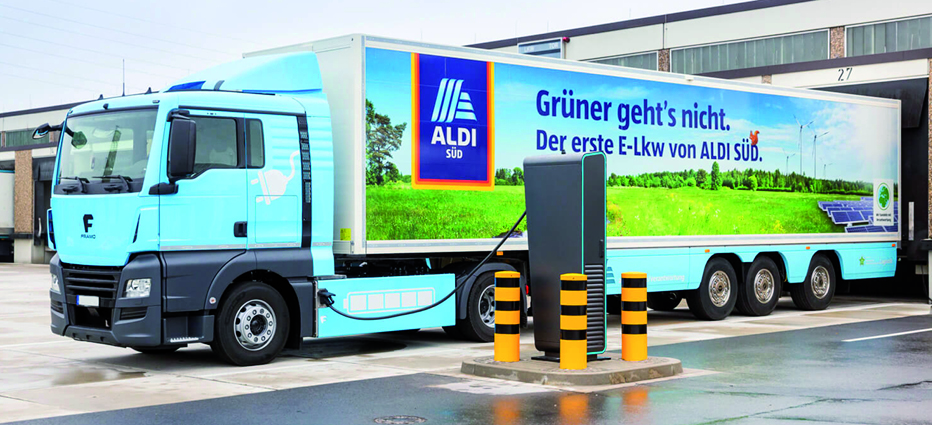
Mario Grobholz is Vice President of Product Management at G+D Mobile Security. In this interview he explains how 5G is different from 4G, and how the upcoming mobile communications standard is crucial to the success of the Connected Car.
Mr. Grobholz, what do you believe are the most important differences between 5G and the current mobile communications standard?
Mario Grobholz: 5G will be able to process significantly more data and connect more devices at the same time than is possible with 4G. The new mobile communications standard will enable speeds that are hundreds of times faster, with analysts forecasting that around 34 billion devices and machines will be connected to each other by 2024. In addition, latency times of less than a millisecond will be possible with 5G, which will enable the mobile communications network to be used in a much more targeted and individual way than it is today.
What does that mean in concrete terms?
Grobholz: There will be dedicated network “slices”, i.e. virtual networks that are operated in parallel on the same physical infrastructure, and which make available different data rates, speeds, and capacities. These can each be allocated to various applications in a targeted manner. For example, there will be a special IoT slice for machine-to-machine communication; a second slice will provide expanded mobile broadband for applications such as 3D streaming and Augmented or Virtual Reality; and a third covers particularly critical communications requirements such as those for medical technology or autonomous driving.
How significant do you believe 5G is?
I believe it is an important technology for the future. Clustering use cases into dedicated networks is the absolute best way to serve the complex multitude of devices and machines in the ecosystem – this is what 5G does with its slices. This enables the specific needs of consumers and individual sectors to be fulfilled in a targeted manner, and services to be priced accordingly. Where the mobile communications network was previously designed primarily to serve mobile phone calls and mobile internet, 5G will permit it to support many additional use cases in a targeted manner – these range from Industry 4.0 through smart cities and e-health, to the connected car and autonomous driving. In addition, 5G places a particular focus on the protection of user privacy. This is simply an essential consideration these days, as well as being required by the GDPR.
What role will 5G play for the connected car and autonomous driving?
Grobholz: Connected and self-driving cars constitute one of the markets that will probably most thrive with 5G. To drive to a destination without human intervention, a vehicle of this type must process precise geolocation data and deploy resource-intensive software applications. Tests of autonomous technology have shown how critical the low latency and geographic processing that comes with 5G can be to the success of autonomous vehicles; if there are delays of even just milliseconds in the transfer of instructions to the vehicle via the network, that can make the difference between a successful journey and a tragic accident.

In Germany today we have significant problems with the speed of the mobile communications network. Can the new mobile communications standard change this?
The Edge Cloud is provided for in the 5G network. To a certain extent, this is made up of the many individual data centers with which individual transmitting stations are equipped. This mechanism enables them to keep the required data available locally, and as such to synchronize them without lengthy transfer routes. Autonomously driving cars can then notify one another of their planned routes or receive traffic jam forecasts significantly more quickly, for example. The provision of a small amount of critical information, such as weather forecasts, is controlled by smart cloud server algorithms that do not necessarily need critical Edge capacities.
Will 5G also bring progress in terms of security?
Grobholz: Yes the new mobile communications standard will bring many new security systems along with it. For example, some components of the network will be protected by encrypted solutions on a separated basis, meaning that if one component is compromised, the others remain secure and are not affected. The new authentication confirmation is set to increase security while roaming, by means of a participant’s end device sending cryptographic proof of the network operator’s identity to the domestic mobile communications network operator whenever it connects to a new mobile communications network. The launch of Subscription Concealed Identifier Services, SUCI for short, means that the identity of network participants is also protected by encryption. So 5G is addressing an important data protection requirement.
How will G+D Mobile Security support the new mobile communications standard?
Grobholz: We already provide our customers with special 5G SIM cards for connecting devices and objects to the 5G network. These support all the necessary security systems. In addition, with our ID service platform, we will create identities for the objects, connect them to our eSIM management system, and protect the data in this ecosystem with our data protection solutions. To ensure the standardization of these products and services for 5G, we are proactively engaging with associations and boards such as GSMA, SIMalliance, and 3GPP. 5G will very soon become reality, and will represent a leap forward in technology that brings with it new market developments and major opportunities for growth.
Thank you for the interview.